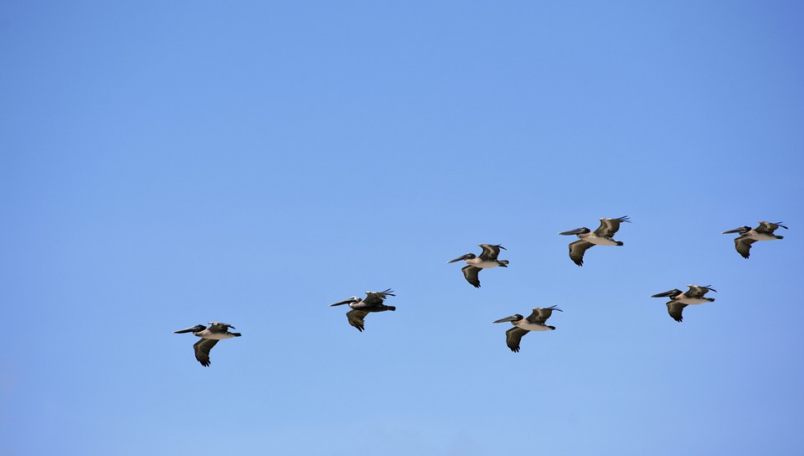Number (addition and subtraction): Pelican Formation
Challenge level ⭐⭐
(designed for children with prior knowledge of the Year 3 and Year 4 programme of study)
Learning Objective
We are learning how to solve a natural world problem by using and applying our knowledge and skills of number and addition.
Useful prior knowledge:
- To add several 2-digit numbers together using efficient mental methods

Clip Description
You will often see birds flying together in large groups. There is safety in numbers. A flock of birds has a much greater chance of spotting a predator, and a swirling mass of bodies makes it far more difficult to pick out and target a single prey bird. Flying as a flock also helps birds to use less energy. This is especially important when they need to migrate and travel long distances.
In this fascinating clip, pelicans can be seen flying in formation. They flock together in distinctive V-shapes. We learn that flying in such a way means that each pelican will use less energy whilst in flight as they can take advantage of the trail of turbulence created by the bird ahead. This turbulence has the effect of creating lift, making it easier to fly and glide. Why do pelicans flap their wings in time with each other? Watch the clip to find out.
Quick Whiteboard Challenge
Watch the clip again, and pause at 1 minute 20 seconds (01:20).
Can you make a reasonable estimate for the number of pelicans you can see in this freeze frame?

 Sign in
Sign in

